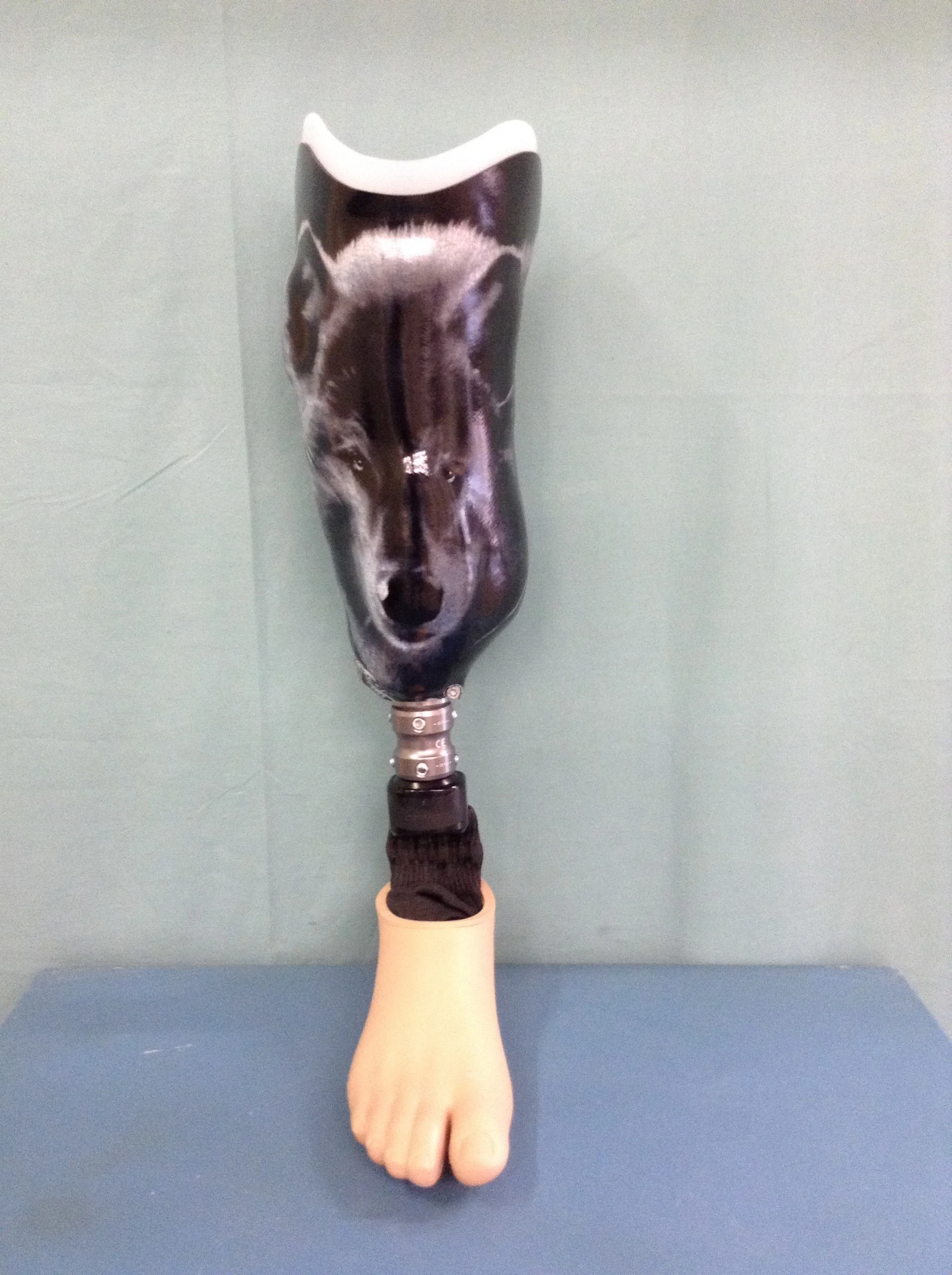This question came up recently, and we thought we would repost it!
QUESTION:
I would like to understand what is meant by lamination and in particular what is a personalized lamination? - Kerry J.
ANSWER:
Hey Kerry! The quick answer - a personalized lamination is anything other than the traditional colors used for the outside layer of a lamination of a prosthetic leg socket - colors which would match a person’s skin tone. All laminations are customized for the patient’s individual prosthesis. Sometimes a patient selects to laminate their socket with a layer in something more personal - something other than a skin tone.
A lamination can consist of a number of different materials layered one on top of the other - from carbon, fiberglass, nylon and Nyglass (a combination of nylon and fiberglass.) These materials are used in different ways and layers to meet each prosthesis wearer’s strength, activity level and weight bearing requirements. We want the prosthesis to be as light as possible but also hold up to those requirements. Once the layered materials are put on the cast, a poly vinyl alcohol (PVA) bag is pulled over the material on the cast and a laminating resin is introduced into the bag. The technician will work the resin into the layered material so that each layer is saturated. After this is achieved, the technician will work out the extra resin so as not to add weight to the socket.
A personal lamination is the same as a regular lamination except that the final, outermost layer of material will be a fabric that the person has chosen to express a personal look on the socket. What is a good fabric to use? The fabric must allow water to go through the fabric, because if water will not go through then neither will laminating resin. For instance, silk screened fabrics and fabrics with iron-ons do not work. These seal the fibers of the fabric and don’t allow the resin to saturate it. A heavy fabric like t-shirt cotton soaks up a lot of resin and can increase the weight of the prosthesis. A nylon based material (like leggings) works great and does not add any significant weight to the prosthetic leg.
Why would someone want this kind of lamination? Some of the factors in selecting a personalized lamination might be to express a person’s personality. Sometimes the lamination allows the wearer to make the leg their “own” - making it a little easier to adjust to the prosthesis. Sometimes that final look can make the difference in whether or not a person wants to wear the prosthesis. We see this a lot with children - with anything from superheroes to favorite animated characters on the finished socket.
We have a gallery of some personalized laminations here - each of these was created by using a fabric that the patient supplied - so these are one of a kind sockets! Click on any picture to enlarge the image. Be sure to scroll down below to see a slideshow of Brian Day, Fabrication Technician, as he finishes the socket after a fabric with a wolf's head has been used as the final layer of the lamination.
Dankmeyer is happy to personalize a lamination at no extra charge to Dankmeyer patients. Thanks for your question! - Chuck Poole, Director of Fabrication
Do you have a question you would like to Ask Us? Email us at info@dankmeyer.com.





















